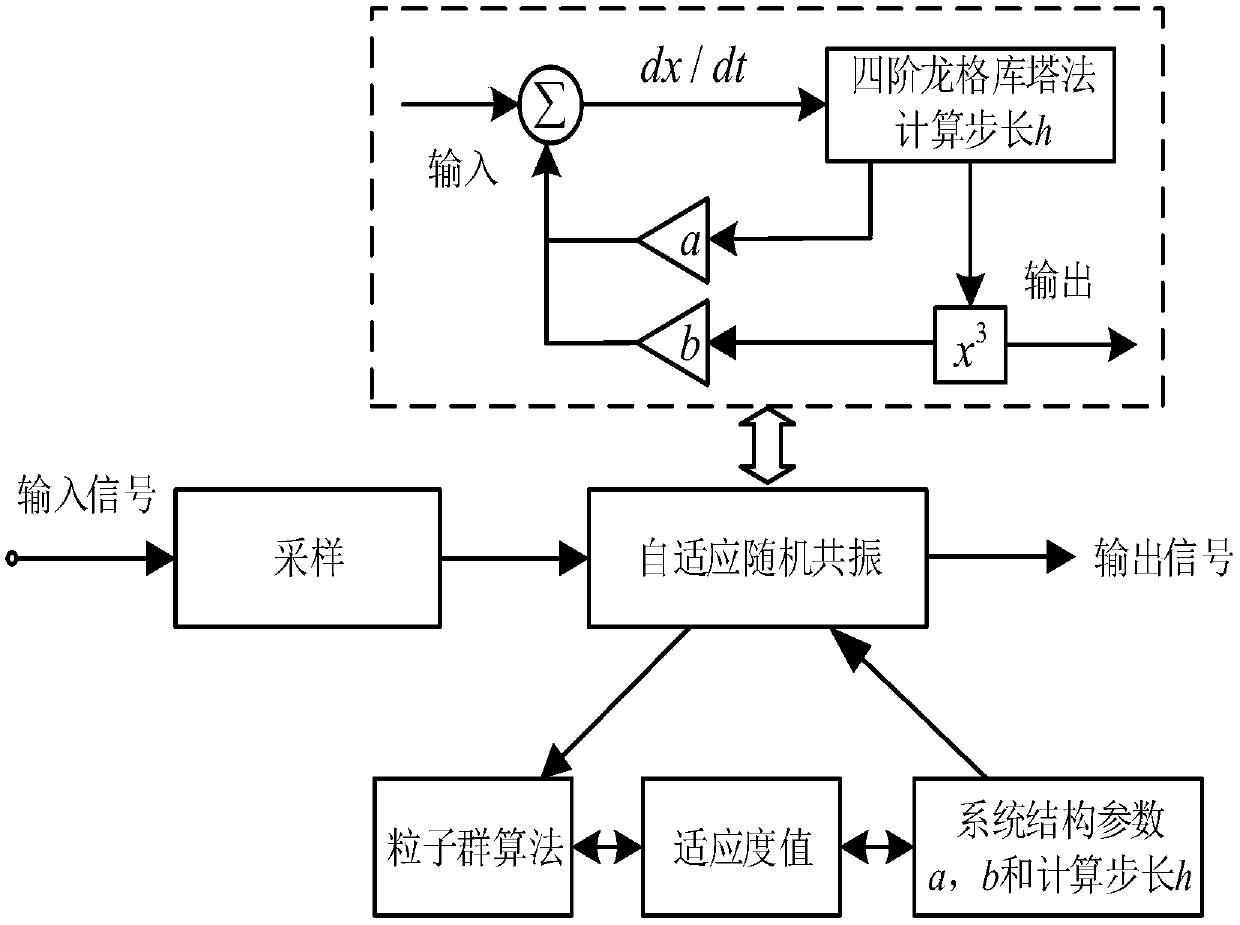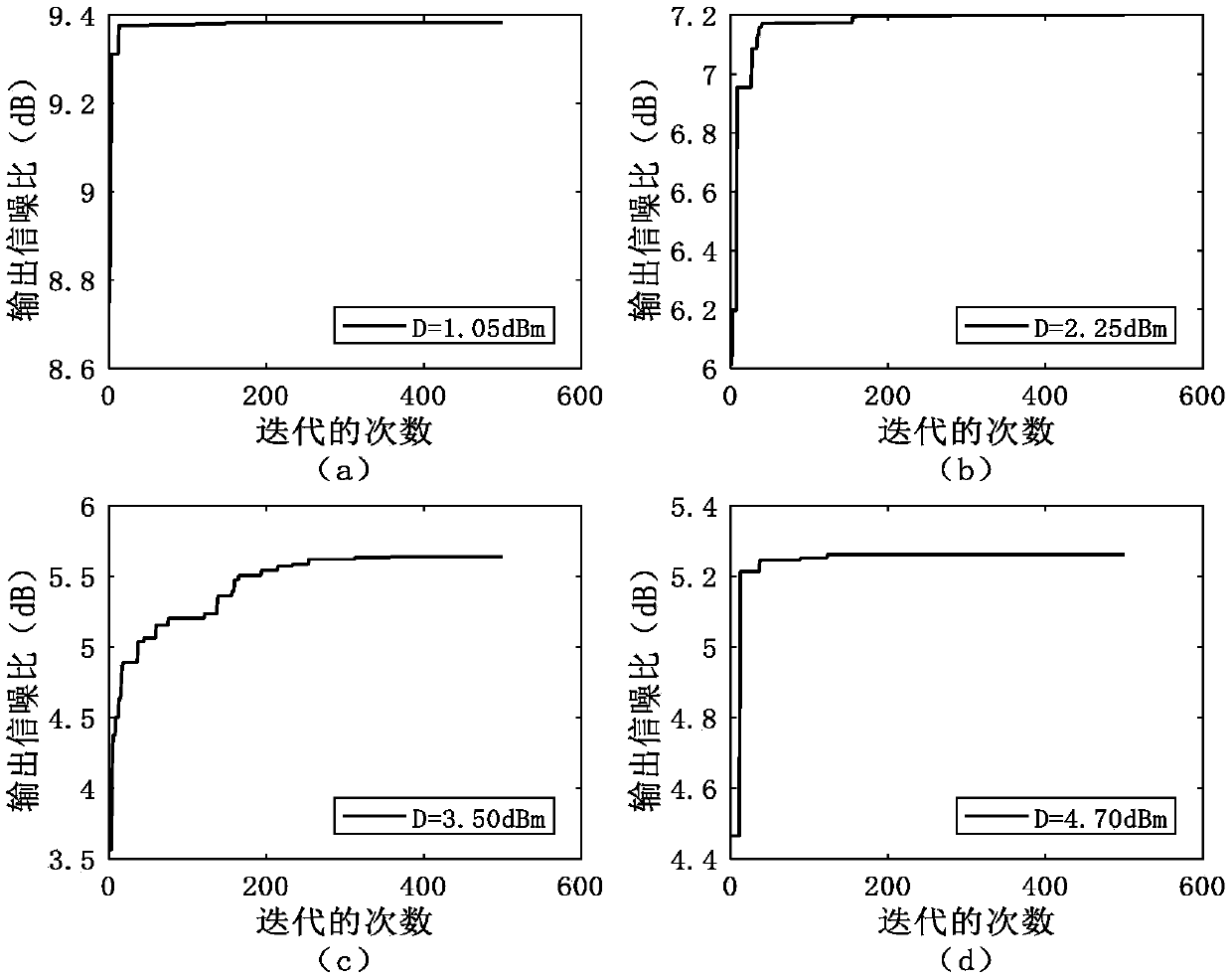A communication signal detection method based on adaptive stochastic resonance
A stochastic resonance, communication signal technology, applied in the field of communication, can solve the problems of not being able to detect the best performance of the signal, limiting the detection of adaptive stochastic resonance communication signal, etc., to improve the detection performance, reduce the communication bit error rate, and improve the communication signal noise. the effect of
- Summary
- Abstract
- Description
- Claims
- Application Information
AI Technical Summary
Problems solved by technology
Method used
Image
Examples
Embodiment 1
[0031] In the harsh electromagnetic environment with high background noise and strong interference, shortwave / ultrashortwave communication can realize reliable data transmission, provide the country's minimum early warning and emergency communication guarantee, and has a special important position in the field of communication.
[0032] The existing shortwave / ultrashortwave communication signal detection method based on adaptive stochastic resonance only realizes single-parameter structural optimization of the structural parameters of the stochastic resonance system or optimizes the structural parameters through scale transformation, and the evaluation of the parameters of the stochastic resonance system is not comprehensive enough. The performance of the detected communication signal cannot reach the best, which limits the application in communication signal detection.
[0033] Aiming at this current situation, the present invention proposes a communication signal detection me...
Embodiment 2
[0045] A communication signal detection method based on adaptive stochastic resonance is the same as embodiment 1, and the fitness value of the stochastic resonance system is calculated using the particle swarm optimization algorithm described in step 4 of the present invention. The specific process is as follows:
[0046] 4a) Particle swarm optimization algorithm initialization: The particle swarm optimization algorithm initialization is carried out for a group of particle swarms composed of m particles, and the initial local optimal value is 0, and the global optimal value is also 0. m=120 in this example.
[0047] 4b) Calculate the SNR fitness value and BER fitness value corresponding to the current particle respectively: due to the optimization of the stochastic resonance system structural parameters a, b and the calculation step size h, the corresponding particle swarm space dimension is 3, The position vector of the i-th particle in the particle swarm where x i1 Repre...
Embodiment 3
[0057] A communication signal detection method based on adaptive stochastic resonance is the same as that in embodiment 1-2, and the SNR fitness value corresponding to the current particle is calculated as described in step 4b) of the present invention, and the SNR is a measure of the quality of the output signal Index, under the combined effect of the structural parameters a, b of the stochastic resonance system and the calculation step size h, the signal-to-noise ratio of the output signal x(t) of the stochastic resonance system is estimated, and the stochastic resonance output signal-to-noise ratio can be recorded as SNR(a ,b,h), based on the theory of circular statistics, the output signal x(t) is approximately regarded as the superposition of noise and signal, and E[x(t)] is used to approximate the output signal, then the output noise is x(t)- E[x(t)], according to the definition of SNR, the output SNR of stochastic resonance system can be calculated as:
[0058]
[00...
PUM
 Login to View More
Login to View More Abstract
Description
Claims
Application Information
 Login to View More
Login to View More - R&D
- Intellectual Property
- Life Sciences
- Materials
- Tech Scout
- Unparalleled Data Quality
- Higher Quality Content
- 60% Fewer Hallucinations
Browse by: Latest US Patents, China's latest patents, Technical Efficacy Thesaurus, Application Domain, Technology Topic, Popular Technical Reports.
© 2025 PatSnap. All rights reserved.Legal|Privacy policy|Modern Slavery Act Transparency Statement|Sitemap|About US| Contact US: help@patsnap.com



